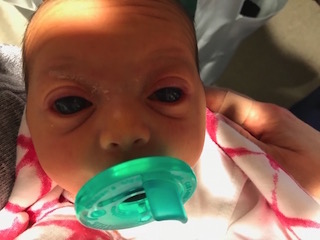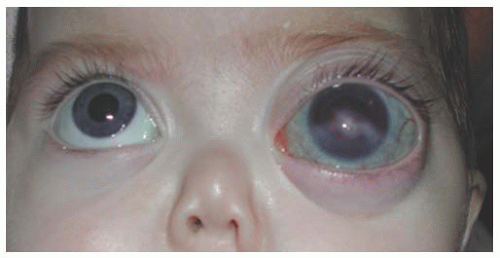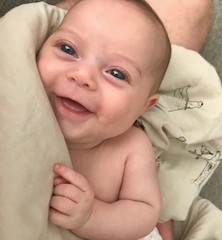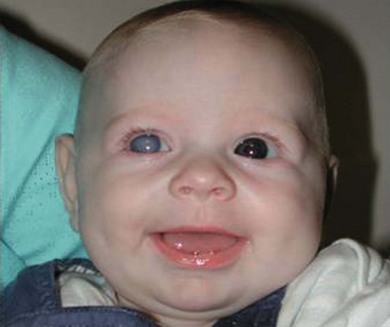Glaucoma tends to develop abruptly and some of the symptoms include: Depending upon how far the disease has actually aggravated, other eye symptoms can consist of:

Glaucoma In Infants And Children Ento Key
Closes his eyelids like he’s protecting his eye;

Signs of glaucoma in babies. If a child has congenital glaucoma, his/her corneas will be cloudy. This lack of symptoms for glaucoma makes it critical to get regular checkups to ensure early detection. Often an examination under anaesthetic is required to adequately examine the child and confirm the diagnosis of glaucoma.
Although congenital glaucoma is uncommon, it is important to know the signs of this disease as infants cannot report symptoms. Parents may notice that the child becomes irritable, fussy, and develops a poor appetite. If the disease is not treated immediately, the child may lose vision.
Glaucoma in children runs in families, but not with one specific pattern or gene. A child can be born with glaucoma. Older adults have a higher risk, but babies as young as three months old can also get glaucoma.
Seems painfully sensitive to light; Glaucoma in children has both external signs and signs that are detected only upon examination by a specialist. 19 the importance of congenital cataract is increasing as a cause of blindness among children.
This should improve when the pressure in the eye is lowered. What are the signs of congenital glaucoma? The symptoms of glaucoma may resemble other eye problems or medical conditions.
This damage leads to loss of eyesight. Older children complain of discomfort or pain in the eyeballs. If you look for images of what vision with glaucoma looks like, you’ll often see photos that show a black tunnel or big black patches dotted around.
The optic nerve, at the back of your eye, sends signals to. It develops gradually and by the time you realize your vision is deteriorating, you’ll already have lost half the neurons. Kids with glaucoma have too much tearing and hate any bright lights.
Instead, the fluid collects and causes damage to the optic nerve. Infants have common manifestations, such as decreased appetite, tearfulness, and poor sleep. The optic nerve is a bundle of nerve fibers that connects the retina with the brain.
There are 3 primary symptoms of pcg. Given that congenital glaucoma normally appears between birth and three years of age, parents are usually the ones to notice that the child is bothered by light (also known as photophobia), has watery eyes (epiphora) and tends to keep his or her eyes closed (blepharospasm). Approximately, 1 out of every 10,000 children born in america are born with the disease.
Glaucoma is a health problem where the normal fluid pressure inside the eyes slowly builds up and doesn’t drain properly. The diagnosis is confirmed by the presence of typical corneal changes (enlargement, clouding and splits in descemet's membrane), raised intraocular pressure and optic disc cupping. Advertisement excessive tearing, called epiphora
If the pressure is too high, there is glare from lights and some swelling of the cornea, and the natural reflex will be watering eyes. Signs of glaucoma in babies and children. Clinical manifestations of glaucoma in children:
While most adults with glaucoma have no symptoms, babies and young children with glaucoma may display the following signs: Childhood glaucoma is associated with physical changes in the eye that are caused by the high pressure. Symptoms of childhood glaucoma include enlarged eyes, cloudiness of the cornea, and photosensitivity (sensitivity to light).
You’re most likely to see that your baby: The most common symptoms of congenital/infantile glaucoma are excessive tearing, light sensitivity and a large, cloudy cornea (the normally clear front surface of the eye) which can cause the iris (colored part of the eye) to appear dull. Congenital glaucoma presents with excessive tearing, light sensitivity and a cloudy enlarged cornea.
The signs and symptoms of congenital glaucoma are usually present at birth. Signs of glaucoma in babies are big eyes and cloudy looking corneas. Always consult your child's physician for a.
Frequent tearing of the eye (s) light sensitivity (tendency to close one or both eyes in bright light) visible cloudiness near the surface of the enlarged eye (s) any level of vision loss, particularly in peripheral vision. Gradual cloudiness of one or both eyes (present at birth or develops later) abnormal enlargement of the eyeballs. One eye appearing larger than the other.
18 while monogenetic abnormalities, syndromes, metabolic disorders, genetic disorders, and congenital rubella syndrome are recognized causes of this condition, in the majority, the cause is unknown. The symptoms of developmental glaucoma can include: Early detection and diagnosis is very important to prevent loss of vision.
Most types of glaucoma develop gradually, so in the early stages there are no symptoms. The iris (part responsible for eye color) may also appear dull. It is a kind of glaucoma that happens to newborns or babies in the first few years.
In most cases, the fluid doesn't drain like it should and the buildup makes your eye pressure rise. In an uncomplicated case, surgery can often correct such structural defects. Enlargement of the eye, cloudiness of the cornea, and injury to the optic nerve are examples of changes that can occur as a result of glaucoma.
Significant vision can be lost before someone has any signs of glaucoma.
Congenital Glaucoma - International Hospital Kampala Facebook

Primary Congenital Glaucoma For Professionals - Gene Vision

Congenital Glaucoma - An Overview Sciencedirect Topics

Childhood Congenital Glaucoma - Glaucoma Associates Of Texas
Health Awareness Articles Special Needs Children Health Awareness Days Swavalamban Children Rehabilitation Centre Ujjain - Part 9

Childhood Glaucoma Detection Management Impact - Mivision
Pediatric Glaucoma A Review Of The Basics

Pin On Iyt Health Advisor

Congenital Glaucoma Types Symptoms Causes Signs Treatment And Prognosis - Scope Heal

Severe Congenital Glaucoma In A Newborn Duke Health Referring Physicians

Pin On Pediatric Picture Atlas
Congenital Glaucoma - Europe - American Academy Of Ophthalmology

Childhood Glaucoma Glaucoma Research Foundation

Glaucoma In Infants And Children Ento Key

Glaucoma Information Congenital Glaucoma - Glaucoma Information

Congenital Glaucoma Download Scientific Diagram

Signs Symptoms - Glaucoma Are You At Risk

Severe Congenital Glaucoma In A Newborn Duke Health Referring Physicians

Childhood Glaucoma Ento Key

